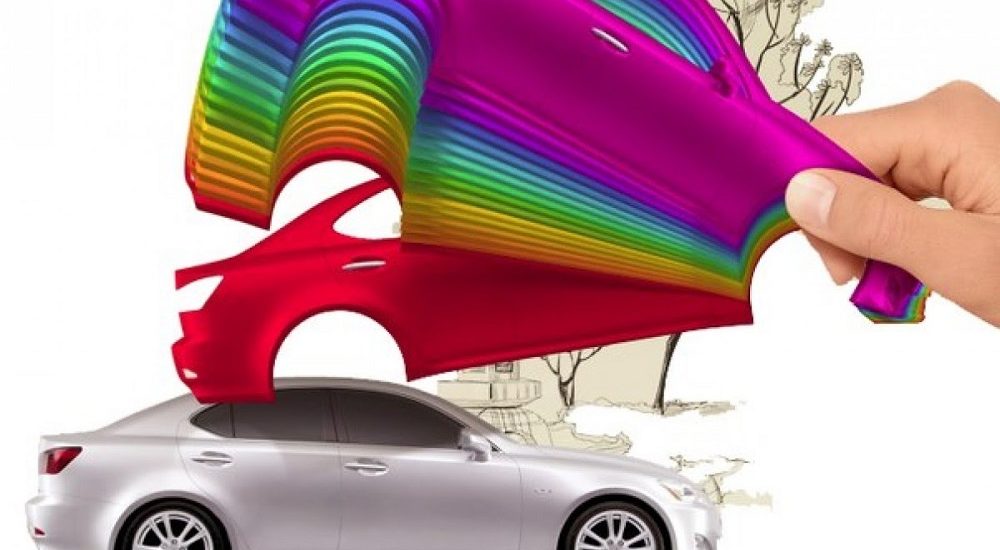Color is the same characteristic of the car as its model. If the car shines with bright color, excellent gloss, its appearance is impeccable. High-quality painting prolongs the lifespan of the car, because protects it against corrosion. Let’s see what car paints are and how to maximize the effect of painting.
The composition of car paint
Any automotive paint (automotive enamel) consists of a pigment, a binder, a filming agent, a filler, additives, a special pigment and a solvent:

A pigment is a powdery element of paint that is responsible for its tone and color. The main function of pigments is decorative, that is, providing the film with color and covering capacity. Also, pigments increase the strength and performance properties of the coating, some of them possess the properties of corrosion inhibitors. In terms of chemical composition, pigments are natural or artificial oxides, or metal salts, metal powders, as well as organic pigments to give the coatings bright colors.
Special pigments allow to get effects like “chameleon”, “metallic”, “nacre”, luminous surface.
A binder is a pure or dispersion solution, the main function of which is the fastening of the paintwork material, that is, it’s the element that gives the paint an important property – adhesion, ability to stay on the painted surface. The binder reliably holds the coloring pigment and forms a smooth glossy surface after painting. Any paint and varnish material (coating) necessarily contains binders. There may be no solvents in powder paintwork coatings, and there are no colored pigments in transparent car varnishes.
A filming agent is a pure and natural component, but the substance can also be synthetic. Various natural and synthetic resins and vegetable oils are used as film formers in the paint and varnish industry. Some paint and varnish materials may contain two or more filming agents. Film-forming substances are usually either very viscous liquids or fragile solids. To reduce their viscosity, solvents are added to the paintwork material.
Due to the solvent, the paint remains liquid during manufacturing and storage. A very wide range of organic liquids (hydrocarbons, ketones, alcohols, ethers) and mixtures of them are used as solvents. Thus, the solvent is an element that gives the paint the properties of a liquid, that are necessary for its uniform application. In the process of painting, the solvent evaporates, leaving a two-component mixture of pigment and binder.
A filler creates the final volume and density of painting. In terms of their composition, fillers are white or slightly colored powders of cheap natural minerals (talc, gypsum, mica, kaolin, chalk, etc.). Some fillers are added to improve heat resistance – for example, mica or asbestos.
Modern paintwork materials are multicomponent compositions, and they also contain various target additives made to improve certain properties of the product.
In particular, additives can increase the elasticity of coatings (plasticizers), their resistance to ageing (antioxidants), fire resistance (flame retardants), absorb UV radiation, prevent pigment from precipitating, prevent the formation of a surface film during storage, improve bottling.
Some additives can be added to the paintwork material immediately before use, for example, drying accelerators, plasticizers, matting and structuring additives.

Properties of car paints
Car paint should be of high quality, which implies the presence of certain properties in it. The main properties are denseness, covering capacity (adhesiveness), hardness and elasticity. Denseness of paint depends on the amount of pigment and binder. The less the latter, the less dense is the automotive paint and the worse its elasticity. Accordingly, hardness will is also affected. The latter means resistance to the formation of chips and obstacles (only glass has one hundred percent hardness, and 50-60% are good for paint). Adhesiveness of paint means its ability to adhere to the painted surface, filling the latter as densely as possible.
In any case, automotive paint protects the body and gives aesthetics (presentable appearance) to the car. Coloring by an individual variant (for example, with the help of tuning) makes it possible to create a unique appearance of the car. Qualitatively painted cars are sold better in comparison with those four-wheel brothers that can’t boast of a presentable exterior.
Effects of painting
Among the effects that can be achieved through the use of modern painting technologies, there are “gloss”, “matte”, “metallic”, “chameleon”, “nacre”.
Car enamels with a glossy finish can be found in all product lines of well-known manufacturing companies (with the exception of alkyd ones). The gloss on the car body is created in the process of polymerization of the enamel’s binder component.
Matte effect is used for both whole car body’s painting, and marking individual elements. An alkyd enamel is usually chosen for matting the surface of the body.
Metallic effect is achieved by adding a special reflective pigment. Painting is difficult enough, and you can trust only professionals with it. Earlier, tiny flakes of aluminum powder were added to the enamel, which, like micro mirrors, were supposed to reflect the light falling on them and give the coating a sparkling, metallic effect, and the item of unattainable luxury and car owners’ desire were metallics with exotic names “champagne” or “wet asphalt”. Now metallic painting is possible, even if the car surface is matte.
“Chameleon” effect is possible with a three-layer painting using “chameleon” enamel. The shade of the car will be different if you look at it from different angles.
“Nacre” effect requires the use of a special pigment that reflects sunlight differently depending on its location in the colored layer. That’s how a special nacre gloss appears. The modern “nacre” effect can be three-layered.

Even if your car looks like a toy for a Christmas tree, the driver’s license should always be with you. It’s better if it is international, so that there will be no problems when traveling to other countries by car. The international driver’s license is processed quickly and easily on our website. We invite you to do it right now!

Published March 22, 2019 • 6m to read






